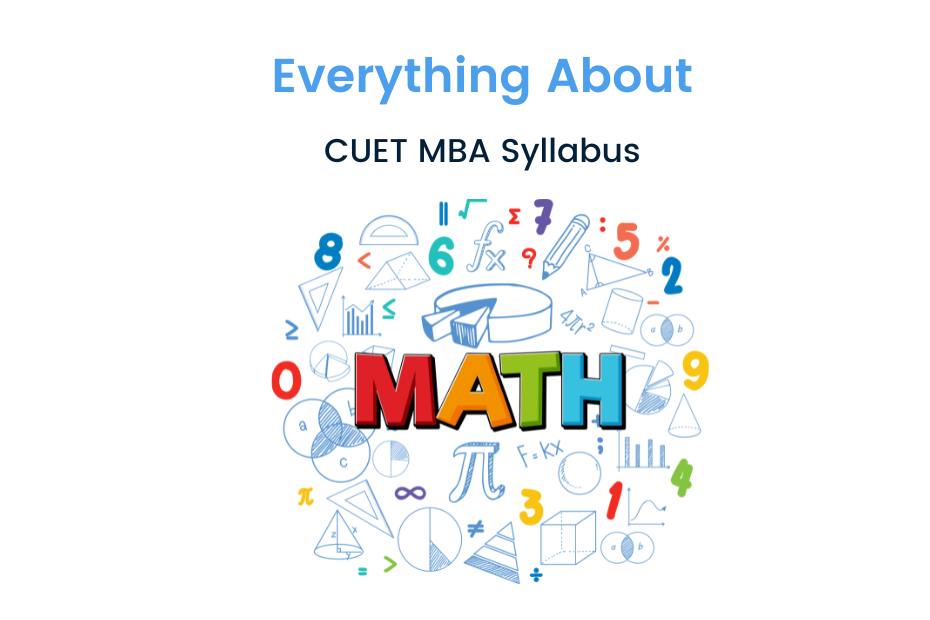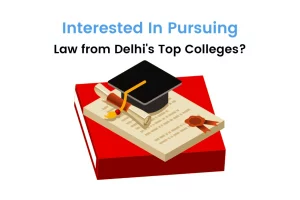Are you gearing up for the Common University Entrance Test (CUET) and aiming to ace the Mathematics section? Understanding the CUET Maths syllabus is crucial for excelling in this competitive exam. The National Testing Agency has released the CUET Mathematics Syllabus for 2024, outlining the key topics that aspirants need to focus on. This comprehensive syllabus covers a wide range of mathematical concepts, ensuring that candidates are well-prepared for the exam.
The CUET Mathematics Syllabus for 2024 comprises two main sections: Section A and Section B (divided into B1 and B2). In Section A, candidates will encounter questions covering algebra, calculus, integration and its applications, differential equations, and other fundamental mathematical principles. This section is compulsory for all aspirants and contains 15 questions.
Section B1 is dedicated to Mathematics and features 30 questions, out of which candidates need to attempt 20. This section delves deeper into mathematical theories, requiring a thorough understanding of topics such as geometry, trigonometry, and probability. On the other hand, Section B2 focuses solely on Applied Mathematics, presenting 30 questions from this field. Aspirants must tackle 20 questions from this section, showcasing their proficiency in applying mathematical concepts to real-world scenarios.
To succeed in the CUET Mathematics exam, candidates must familiarize themselves with the paper pattern and question distribution. The question paper will consist of 45 to 50 questions in total, with candidates required to attempt a minimum of 35 to 40 questions. This structure emphasizes the importance of comprehensive preparation across all sections of the syllabus.
With the CUET Maths syllabus serving as a roadmap for aspirants, it’s essential to have a holistic understanding of the covered topics. Stay tuned for more insights till the end of this blog post!
Topics covered
CUET UG Maths Pattern (SCQP19)
The CUET for undergraduate studies includes a comprehensive Mathematics syllabus. Understanding the exam pattern is crucial for effective preparation before CUET Maths Syllabus.
| Section | Number of Questions | Duration |
| Section IA & Section IB | 40 (out of 50) | 45 mins |
| Section II | 35/40 (out of 45/50) | 45 mins |
| Section III | 60 (out of 75) | 60 mins |
Key Points:
- Section IA: Candidates need to attempt 40 questions out of 50 in each language within 45 minutes.
- Section IB: Candidates will find a mix of Mathematics and Applied Mathematics questions, with 25 questions to be attempted from each category.
- Section II: Candidates must attempt 35/40 questions out of 45/50 in domain-specific subjects within 45 minutes.
- Section III: Candidates have to attempt 60 questions out of 75 within 60 minutes.
- Marking Scheme: Each correct answer earns five marks, with a deduction of one mark for each incorrect answer.
Understanding the structure and content of the CUET UG Maths Pattern is essential for aspirants preparing for the examination.
Students also read about CUET UG Syllabus
CUET UG Maths Syllabus (SCQP19) – Section A
Following the syllabus for CUET UG Maths Syllabus – Section A
| Mathematics Topics | Description |
| Algebra | Matrices and types of Matrices; Equality of Matrices, transpose of a Matrix, Symmetric and Skew Symmetric Matrix; Algebra of Matrices; Determinants; Inverse of a Matrix; Solving of simultaneous equations using Matrix Method |
| Calculus | Higher order derivatives; Tangents and Normals; Increasing and Decreasing Functions; Maxima and Minima |
| Integration and its Applications | Indefinite integrals of simple functions; Evaluation of indefinite integrals; Definite Integrals; Application of Integration as area under the curve. |
| Differential Equations | Order and degree of differential equations; Formulating and solving differential equations with variable separable. |
| Probability Distributions | Random variables and their probability distribution; Expected value of a random variable; Variance and Standard Deviation of a random variable; Binomial Distribution |
| Linear Programming | Mathematical formulation of Linear Programming Problem; Graphical method of solution for problems in two variables; Feasible and infeasible regions; Optimal feasible solution |
CUET UG Maths Syllabus (SCQP19) – Section B
Now, that you have an overview of Section A CUET Maths Syllabus, let’s explore the syllabus for other sections.
Section B1 Mathematics
| Mathematics Topics | Description |
| Unit 1: Relations & Functions | Relations & Functions; Inverse Trigonometric Functions |
| Unit 2: Algebra | Matrices; Determinants |
| Unit 3: Calculus | Continuity & Differentiability; Applications of Derivatives; Integrals; Applications of Integrals; Differential Equations. |
| Unit 4: Vectors & Three-dimensional Geometry | Vectors; Three-dimensional Geometry |
| Unit 5: Linear Programming | Introduction, related terminology such as constraints, objective function, optimization, different types of linear programming(L.P.) problems, mathematical formulation of L.P. problems, graphical method of solution for problems in two variables, feasible and infeasible regions, feasible and infeasible solutions, optimal feasible solutions(up to three non-trivial constrains). |
| Unit 6: Probability | Multiplications theorem on probability. Conditional probability, independent events, total probability, Baye’s theorem. Random variable and its probability distribution, mean and variance of haphazard variable. Repeated independent (Bernoulli) trials and Binomial distribution. |
Section B2: Applied Mathematics
| Mathematics Topics | Description |
| Unit 1: Numbers, Quantification and Numerical Applications | Modulo Arithmetic; Congruence Modulo; Allegation & Mixture; Numerical Problem; Boats & Streams; Pipes & Cisterns; Races & Games; Partnership; Numerical Inequalities |
| Unit 2: Algebra | Matrices & Types of Matrices; Equality of Matrices, Transpose of a Matrix, Symmetric & Skew Symmetric Matrix |
| Unit 3: Calculus | Higher Order Derivatives; Marginal Cost & Marginal Revenue Using Derivatives; Maxima & Minima |
| Unit 4: Probability Distributions | Probability Distributions; Mathematical Expectations; Variance |
| Unit 5: Index Numbers & Time-Based Data | Index Numbers; Construction of Index Numbers; Test of Adequacy of Index Numbers; Time Series; Components of Time Series; Time Series Analysis for Univariate Data |
| Unit 6: Inferential Statistics | Population & Sample; Parameter & Statistics & Statistical Interferences |
| Unit 7: Financial Mathematics | Perpetuity, Sinking Funds; Valuation of Bonds; Calculation of EMI; Linear Method of Description |
| Unit 8: Linear Programming | Introduction & Related Terminology; Mathematical Formulation of Linear Programming Problem; Different Types of Linear Programming Problem; Graphical Method of Solution for problems in two Variables; Feasible and Infeasible Regions; Feasible and in feasible solutions, optimal feasible solution |
For complete information, refer to the official bulletin issued by NTA – https://exams.nta.ac.in/CUET-UG/images/mathematics.pdf
Top colleges for Mathematics UG Courses
Below are some of the colleges for Mathematics UG courses accepting CUET Score for Bachelors in Mathematics Course:
| Name of The College | Course Name |
| St. Stephen’s College, New Delhi | BSc (Hons.) in Mathematics |
| Hindu College, New Delhi | BSc (Hons.) in Mathematics |
| Parul University, Vadodara | BSc in Mathematics |
| Lady Shri Ram College for Women (LSR), New Delhi | BSc (Hons.) in Statistics |
| Woxsen University, Hyderabad | BSc in Mathematics |
| Miranda House, New Delhi | BSc (Hons.) in Botany |
| Loyola College, Chennai | BSc in Mathematics |
| ICFAI University, Jaipur | BSc in Mathematics |
| Kristu Jayanti College, Bangalore | BSc in Mathematics without a mathematics requirement |
| Mount Carmel College, Bengaluru | BSc (Hons.) in Mathematics |
If you need any help in selecting the right college! Connect with iDreamCareer’s expert counselors in Chennai.
CUET Maths Syllabus for PG
The below section covers the important topics asked by CUET for PG in Mathematics.
| Mathematics Topics | Description |
| Algebra | Groups, subgroups, Abelian groups, non-abelian groups, cyclic groups, permutation groups; Normal subgroups, Lagrange’s Theorem for finite groups, group homomorphism and quotient groups, Rings, Subrings, Ideal, Prime ideal; Maximal ideals; Fields, quotient field. |
| Real Analysis | Sequences and series of real numbers. Convergent and divergent sequences, bounded and monotone sequences, Convergence criteria for sequences of real numbers, Cauchy sequences, absolute and conditional convergence; Tests of convergence for series of positive terms-comparison test, ratio test, roottest, Leibnitz test for convergence of alternating series. |
| Complex Analysis | Functions of a Complex Variable, Differentiability, and analyticity, Cauchy Riemann Equations, Power series as an analytic function, properties of line integrals, Goursat Theorem, Cauchytheorem, consequence of simple connectivity, index of closed curves. |
| Integral Calculus | Integration as the inverse process of differentiation, definite integrals, and theirproperties, Fundamental theorem of integral calculus. Double and triple integrals, change of order of integration. Calculating surface areas and volumes using double integrals and applications.Calculating volumes using triple integrals and applications. |
| Differential Equations | Ordinary differential equations of the first order of the form y’=f(x,y). Bernoulli’s equation, exact differential equations, integrating factor, Orthogonal trajectories, Homogeneous differential equations-separable solutions, Linear differential equations of second andhigher order with constant coefficients, and method of variation of parameters. Cauchy-Euler equation. |
| Vector Calculus | Scalar and vector fields, gradient, divergence, curl, and Laplacian. Scalar line integrals and vector line integrals, scalar surface integrals and vector surface integrals, Green’s, Stokes, and Gauss theorems and their applications. |
| Linear Programming | Convex sets, extreme points, convex hull, hyper plane & polyhedral Sets, convexfunction and concave functions, Concept of basis, basic feasible solutions, Formulation of Linear Programming Problem (LPP), Graphical Method of LPP, and Simplex Method. |
Suggested Read: CUET PG Syllabus
For more information, refer to the detailed exam syllabus in this official bulletin – https://cdnasb.samarth.ac.in/v2/2024/pg/pg-site-admin24/syllabus/science-pdf/mathematics-scqp19-.pdf
Top Colleges for Mathematics PG Courses
Following are the top 10 colleges offering PG-level courses in Mathematics:
| Name of The College | Course Name |
| Indian Institute of Science (IISc), Bangalore | MSc and PhD in Mathematics |
| Indian Institute of Technology (IIT) Kharagpur | MSc and PhD in Mathematics |
| Indian Statistical Institute (ISI), Kolkata | MSc and PhD in Mathematics |
| Tata Institute of Fundamental Research (TIFR), Mumbai | MSc and PhD in Mathematics |
| Chennai Mathematical Institute (CMI) | MSc and PhD in Mathematics |
| University of Delhi | MSc in Mathematics |
| Harish-Chandra Research Institute (HRI), Allahabad | MSc and PhD in Mathematics |
| Jawaharlal Nehru University (JNU), New Delhi | MSc and PhD in Mathematics |
| Aligarh Muslim University (AMU) | MSc in Mathematics |
| Pondicherry University | MSc in Mathematics |
Note: The above list is not exhaustive. Also, read – CUET University List 2024
Final Thoughts!
Having an understanding of the CUET Maths Syllabus is crucial for aspirants aiming to excel in the exam. Covering topics like algebra, calculus, and geometry, it forms the foundation for success. By mastering these concepts, candidates can approach the CUET confidently and maximize their chances of achieving their academic goals.
If you still have queries! Don’t hesitate to ask experts! Here’s the success story:
iDreamCareer guided Niharika through comprehensive psychometric assessments, exploring her aptitude, personality, and interests. After considering various career options, they narrowed down her choices to Commerce and Business Management, dissuading her from pursuing IAS. They clarified the distinctions between BBA and B.Com courses, assisting her in selecting B.Com (Hons) as her primary choice. Ensuring she didn’t miss application deadlines, they supported her through CUET exam preparation and facilitated her CSAS registration for Delhi University colleges. With their assistance, Niharika secured admission to her dream college, SRCC, for BCom Honours, aligning with her career aspirations effectively.
Related Links
- CUET English Syllabus
- CUET MBA Syllabus
- CUET UG Result 2024
- Negative Marking In CUET
- CUET PG 2024 Results
- How to Calculate CUET Score?
- CUET LLB Syllabus 2024
- CUET Political Science Syllabus
- CUET Physics Syllabus
- CUET Chemistry Syllabus
- CUET Syllabus for Science Students
- CUET Syllabus for Commerce Students
- CUET Complete Syllabus
FAQs
To score well in the CUET Maths Exam, focus on understanding fundamental concepts thoroughly. Practice regularly with sample papers and previous year’s questions. Develop problem-solving skills by revising key topics such as algebra, calculus, and geometry. Time management during the exam is crucial, so practice solving questions within the allotted time frame.
The CUET Maths Syllabus for 2024 encompasses algebra, calculus, integration, differential equations, and probability. Section A consists of fundamental principles with 15 questions. Sections B1 and B2 delve deeper into mathematics and applied mathematics respectively, with 30 questions each. Comprehensive preparation across all topics is essential for success.
Covering all topics of the CUET Maths Syllabus is crucial for comprehensive preparation and maximizing performance in the exam. Each topic contributes to a candidate’s overall understanding and proficiency in mathematics, ensuring they are well-equipped to tackle the diverse range of questions that may appear on the test.
The complexity of the CUET Maths Syllabus depends on individual proficiency and preparation. A comprehensive grasp and consistent practice can help overcome difficulties in various subjects like algebra, calculus, and probability. With diligent study and effective time management, aspirants can navigate through the syllabus successfully.

Anushree Rastogi is a Senior Content Writer at iDreamCareer, bringing over 5 years of expertise to the field of career counseling. She has done a PGDM in Marketing and Finance and possesses a unique blend of skills that allows her to craft engaging and informative content. She is passionate about helping individuals navigate their career paths and has dedicated her career to providing valuable insights through her content. Her commitment to excellence and keen understanding of the career landscape make her a trusted guide for those seeking professional direction. With a flair for clear and engaging writing, Anushree is on a mission to empower others to make informed and fulfilling career choices.


















